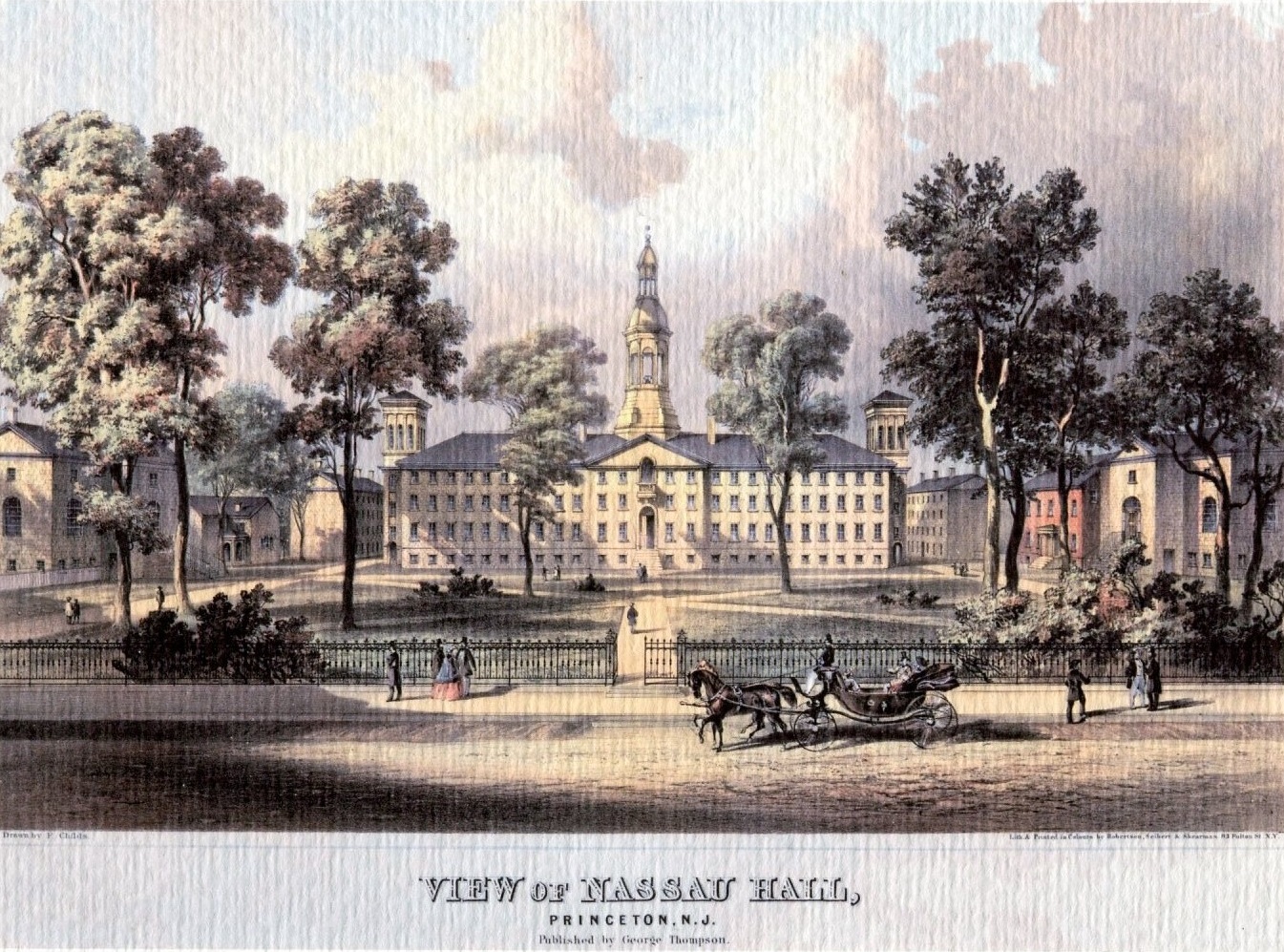-
The Temples of Cloacina
Today, behind Nassau Hall just beyond Cannon Green, visitors to the Princeton University campus will see stairs between two large tiger sculptures installed in 1969. This sharp incline had different scenery prior to the twentieth century, however. Students sometimes called it “South Campus,” “The Temples of Cloacina,” or “Cloaca Maxima.” Less euphemistically or poetically, it served…
-
Woodrow Wilson and the Graduate College
Written by Anna Rubin ’15 This is the second installment in a two-part series examining two aspects of Woodrow Wilson’s Princeton University presidency, featuring sources in our recently-digitized selections from the Office of the President Records. In the first, we looked at his attitude towards Princeton’s eating clubs. Here, we turn to his conflict over…
-
“Even Princeton”: Vietnam and a Culture of Student Activism, 1967-1972
by Kyla Morgan Young GS College campuses in the 1960s and early ’70s were bastions of social and political activism. Students across the nation began to discover a renewed sense of political duty that came in the form of critique. Activism swelled around a myriad of issues including civil rights, gender equality, Apartheid, and most…
-
William Taylor’s “Doggie Wagon”
Searching for materials in archival collections means, at times, trying to figure out how the people of the past would have labeled their photos, named their articles, or categorized their artifacts. They didn’t always use the same terms we would now. For this Black History Month, we examine William Taylor and how he illustrates the…
-
The Changing Shape of American Football at the College of New Jersey (Princeton)
With the Super Bowl coming up this weekend, our thoughts have turned toward the history of American football. We’ve repeated the fact several times: On November 6, 1869, the first intercollegiate football match ever was played on College Field in New Brunswick, New Jersey, between the College of New Jersey (now Princeton University) and Rutgers…
-
Woodrow Wilson and the Eating Clubs
Written by Anna Rubin ’15 We are pleased to announce another newly digitized collection: the Woodrow Wilson Correspondence in the Office of the President Records. Wilson was president of Princeton University from 1902-1910, Governor of New Jersey 1911-1913, and U.S. President 1913-1921. This collection contains correspondence between Wilson and University faculty, administrators, alumni, and parents,…
-
Princeton University During World War II
By April C. Armstrong *14 and Allie Lichterman ’16 In October 1939, as the Nazi war machine crushed Poland, Princeton University’s newly admitted freshman Class of 1943 voted Adolf Hitler the “greatest living being.” A year later, the next freshman class concurred with this decision. These votes reflect the widespread American apathy toward the Nazi…
-
Princeton University During World War I
By Spencer Shen ’16 On the afternoon of September 24, 1914, President John G. Hibben gave an address to incoming freshman in Marquand Chapel, acknowledging that “the opening of this new academic year…presents to our minds a striking contrast: the peaceful setting of this assembly against the dark background of the terrible European war.” With…
-
Study of Education at Princeton and the 1954 Advisee Project
By Madeline Lea ’16 The Study of Education at Princeton was a unique project that evolved during post-World War II discussions of education at the University led by economics professor Frank W. Notestein. Professor Samuel S. Wilks of the mathematics department and Dean of the Faculty J. Douglas Brown ’19 were also involved. They asserted…
This blog includes text and images drawn from historical sources that may contain material that is offensive or harmful. We strive to accurately represent the past while being sensitive to the needs and concerns of our audience. If you have any feedback to share on this topic, please either comment on a relevant post, or use our Ask Us form to contact us.
